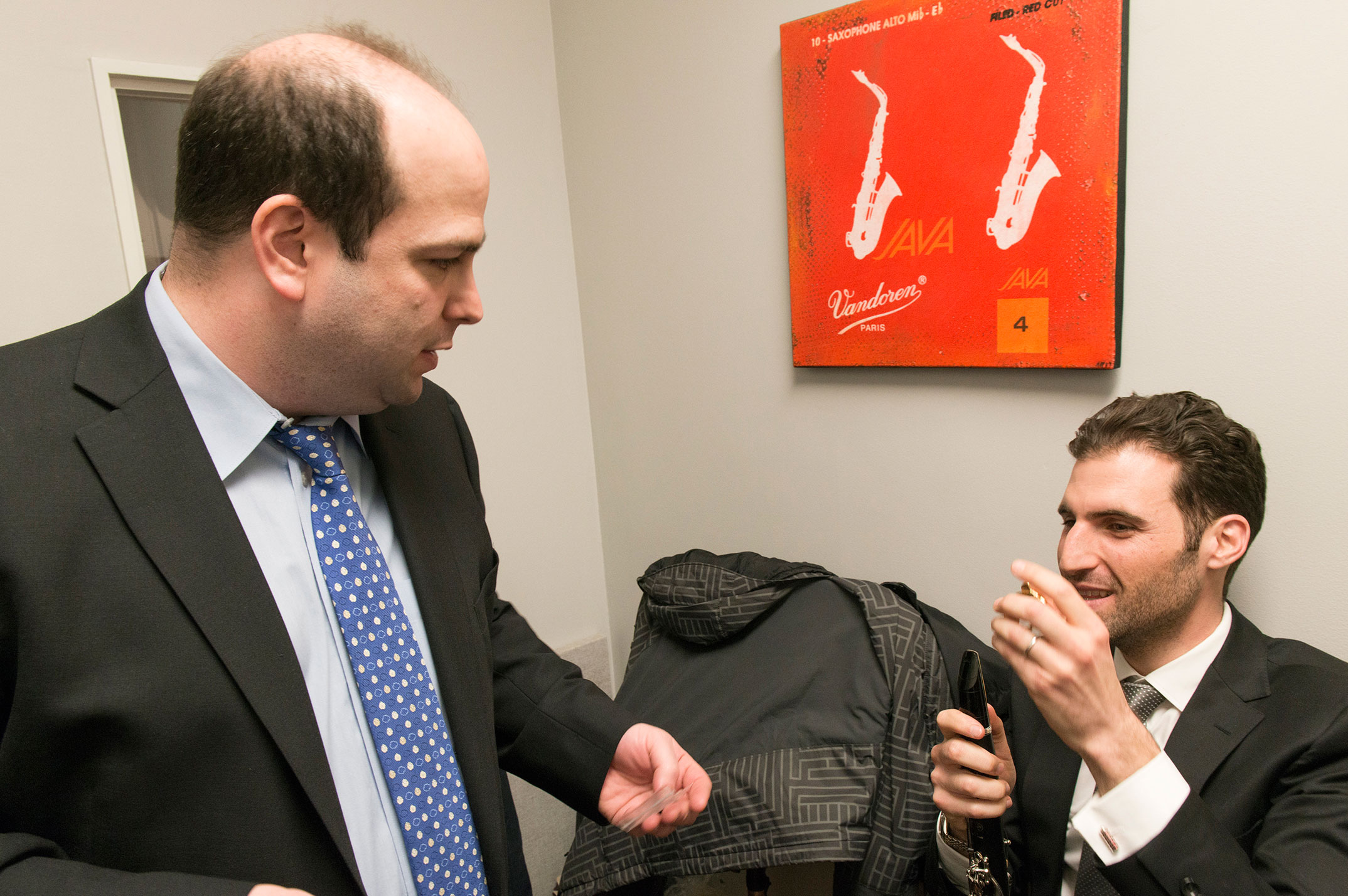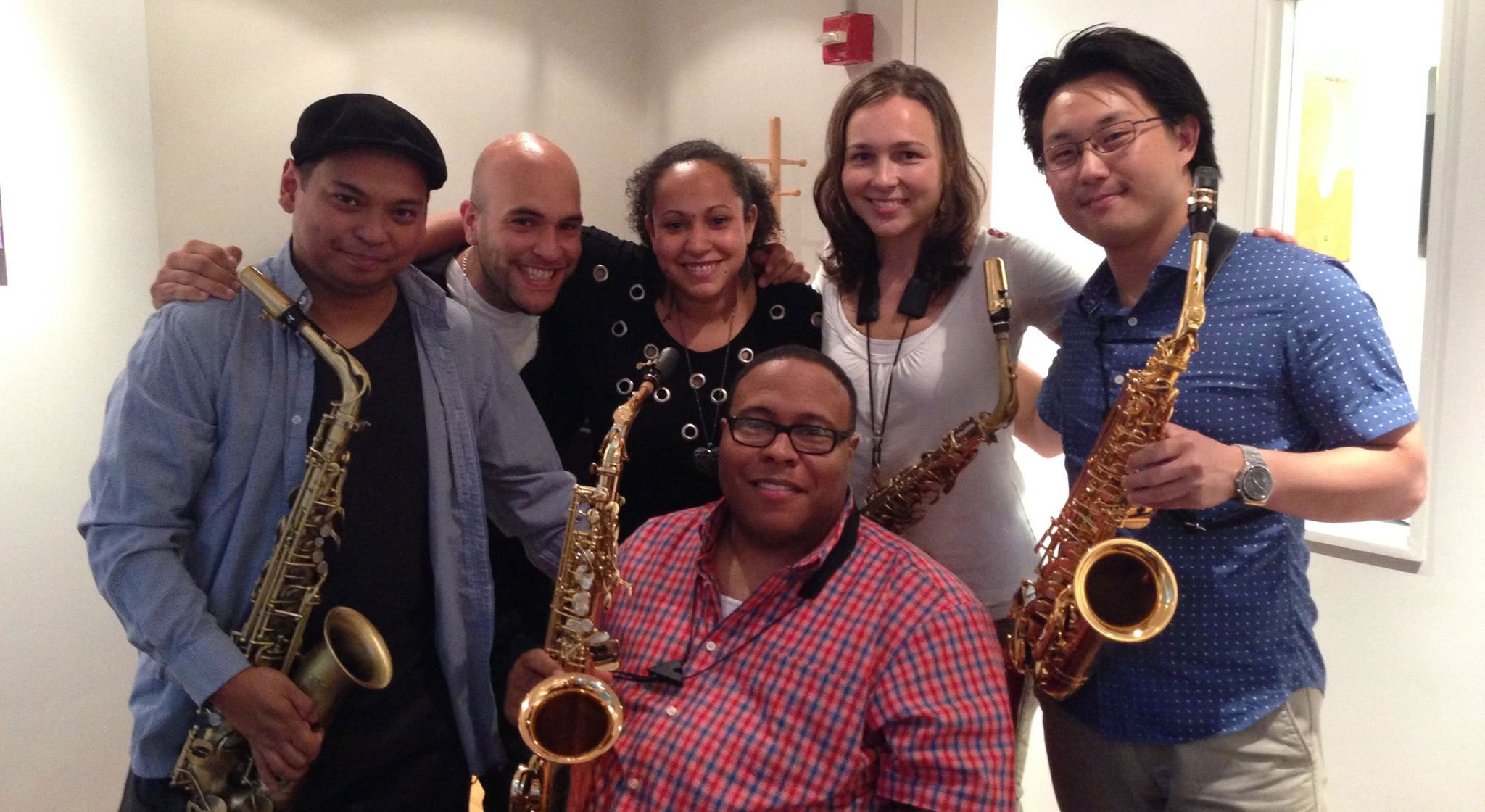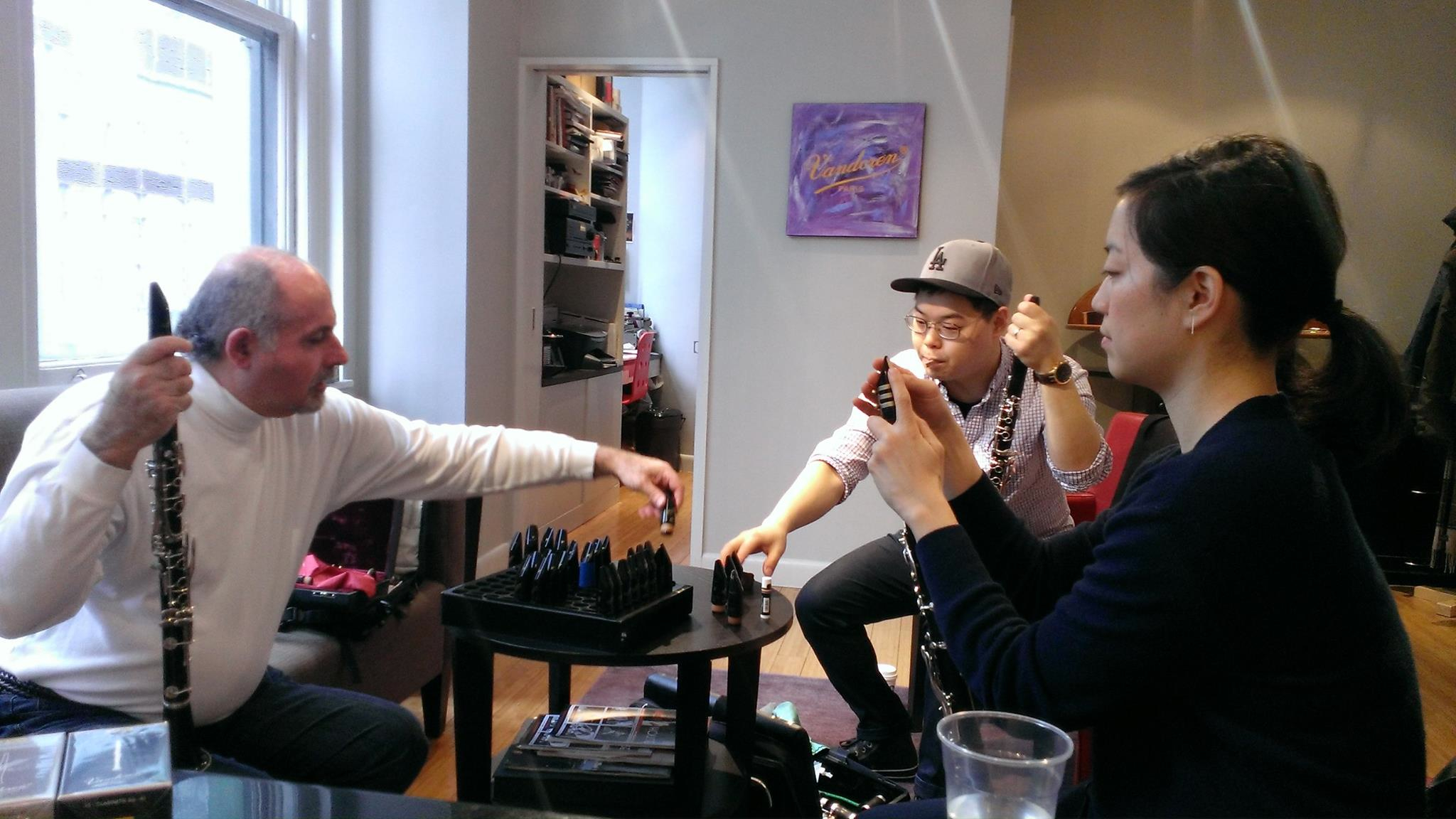The Vandoren Musician’s Advisory Studio: New York’s Invaluable Resource for Woodwinds
Date Posted: May 03, 2016
The Vandoren Musician’s Advisory Studio is based in the fast-paced and well- loved music hotspot of New York City. Located at 336 W 37th St #520, New York, NY 10018, the studio is led by clarinetist David Gould and saxophonist Andrew Hadro. This dynamic duo covers all the bases and serves as the studio’s advisors for any individual with interest in trying Vandoren products. Not only is it a place to discover the right fit for you, but it is also a place for musicians to hang out, “talk shop,” and be immersed in total products bliss. For any woodwind player seeking the missing link in their performance, the Vandoren Studio is the place for you.

VandorenUSA: The Vandoren Musician’s Advisory Studio first started
in 1992 and has been around for an impressive 23 years. How was the
Vandoren Studio first established and how has it evolved through the
years?
David Gould: When the studio first opened, it was by
appointment only and it was primarily for Vandoren products, guitar and
violin strings. My predecessors only booked a couple of days a week.
When I took over things started to change. Slowly the Studio got busier
and I started working there part-time, and then on to full-time. Today
we average seeing 6-8 people a day and have seen as many as 20! Anybody
can come here to experience the Vandoren world and try everything. I’ve
tried to model the studio in NYC after Vandoren Paris, where you go and
try out things and hopefully get all your questions answered.
Andrew Hadro: We are also trying to utilize the internet and the communication that affords us to help people find answers. We have a good sized email list where we can let people know about what’s going on at the studio as well as an active Facebook presence. We field questions from all over the country about Vandoren products because people can now find out about the advisory studio on the internet.
Since so many people have had positive experiences at the studio, how would a person make an appointment with you?
David Gould: People can make appointments via phone or e-mail. We get traffic from local musicians, teachers, students, and amateurs. We get clients from out of town and overseas, everyone is welcome! We have visitors from all of the local ensembles including the Met Opera, the New York Philharmonic, the New York City Ballet, the
Orchestra of St. Luke’s, American Symphony Orchestra, groups from Philadelphia, Boston and other touring groups – the list goes on and on. We are hopeful that the clarinet, classical saxophone, and jazz worlds know about this place.
Andrew Hadro: We are also fairly active on Facebook and can answer questions for people there as well. We often feature news about our programs, events, competitions, new products, and plenty of other things people might want to participate in.

What is the process and conversation you have with a musician to help them find their ideal setup?
David Gould: We get a lot of people in for a lot of
different reasons. The goal is really to answer questions people come in
and ask, and then we try to solve that problem. Most, if not all of the
people coming into the studio, are recommended by other players,
teachers, and/or professionals. Being in this situation, I’ve been able
to get an education from my clients. Watching other people and seeing
their product trials has really helped me continue to understand
equipment better and better.
Andrew Hadro: I still find it amazing how many options we have here in the studio. Not only are there several different lines or types of mouthpieces for each instrument, there are a variety of different measurements and sizes within each line. Between the dozens of mouthpiece choices, ligature options, reed cuts and sizes, there is something for everyone and the right tools to fix any concern or problem related to their equipment.
As musicians, we all have that undeniable moment when a
product finally works. What is your favorite success story on finding a
setup that simply clicks?
David Gould: There have been many of these types of moments; we have some every day! One of my favorite moments was when the M30 clarinet mouthpiece came out and the San Francisco Symphony’s Louis Baez (current Eb clarinetist) came in and started to try it. For once I heard the sound that I have in my head – live! The sound I strive for individually when I play was happening in front of my eyes and ears and it was a kind of an unbelievable moment. Another story, not too long ago, was when Branford Marsalis came in to use a practice room. I asked him to try the then new AL5 when he was finished practicing. He said he was using the AL3 and getting good results out of it but was very particular on what he was looking for. I suggested the new AL5 to him and after playing three notes Marsalis said, ‘That’s it, that’s my new mouthpiece.’ He had a concerto the next day and he used the new Optimum AL5 mouthpiece he just picked up.
What are some of the pitfalls clarinetists and saxophonists face when choosing equipment?
David Gould: If you are looking for a new piece of equipment, you should know why. Meaning you should always try things that you struggle with on the new equipment. The new equipment should help you with your problems. That’s when you’ll find what you’re looking for. If you’re just curious about products and purchase them, you’ll go back to your old set-up real soon. Not every single reed is going to be perfect for every single person, but if you take a different approach to trying new products, you will be surprised at how it will work. I think a lot of it is understanding your day to day and trying to make it better.
Many players come in with a good setup but there is one part of the equation that needs tweaking. This usually has something to do with reed strength, type of reed within the Vandoren family, ligature choice, or as small as it is, changing the thickness of the mouthpiece patch. We consider all of these variables on a daily basis.
Quite a few musicians tell me I need a softer “x”reed or a harder “x” reed to play. For many years now I have philosophically believed in some advice I received from Jean-Paul Gauvin from Vandoren Paris saying “the player needs to find a mouthpiece for the middle of the box of reeds; that way you may have a couple that play a little soft or a couple that play a little hard that one can ultimately use in different situations.”
Andrew Hadro: I completely agree with David, and would add that people who come in with an open mindset and an objective way of looking at their equipment often find the solution they are looking for.

Does the Vandoren Studio offer master classes and opportunities to see artists?
David Gould: We try to create an atmosphere that’s
helpful and fun for people to be in. There are some masterclasses but we
keep them pretty small. If a person does go to the studio in NYC, there
is a good chance you will see some professional artists. Soloists,
recording artists, and members of the world’s best symphonies and
touring bands all regularly stop by. Just the other day, Boris Allakhverdyan
of the Metropolitan Opera was trying Vandoren’s recently released
clarinet mouthpiece, the BD5 and trying different strength reeds. We
were all surprised at the impact a harder reed made on the mouthpiece.
He seemed to get more out of it, but did not lose flexibility.
Andrew Hadro: On the jazz side of things, we host the VandoJam every first Monday of the month at an excellent jazz club in the west village called Zinc Bar. Not only can anyone come watch one of our artists perform with their own groups for free, but they are invited to actually participate and play as well – a form of “in person learning” that is extremely vital to the jazz aesthetic.
As successful as the Vandoren Musician’s Advisory
Studio has been in New York City, musicians might wonder if new, similar
locations may be on the horizon. Looking ahead, what’s next?
David Gould: There’s going to be a Chicago studio again not too long from now as well as a studio in Los Angeles. These studios should both be here by the end of this year. I know that if you provide an opportunity like this to musicians, they’ll come. That’s the big news and we’re looking forward to opening new spaces.
For those in the Los Angeles area please contact Sylvain Carton.
Follow the Vandoren Musician’s Advisory Studio on Facebook and Schedule an Appointment
Email David Gould | Email Andrew Hadro
Learn more about Vandoren JUNO reeds, the first reed designed specifically for students.
Subscribe to the We Are Vandoren E-newsletter (WAVE) to receive 4 weekly articles for Performers, Students, and Educators